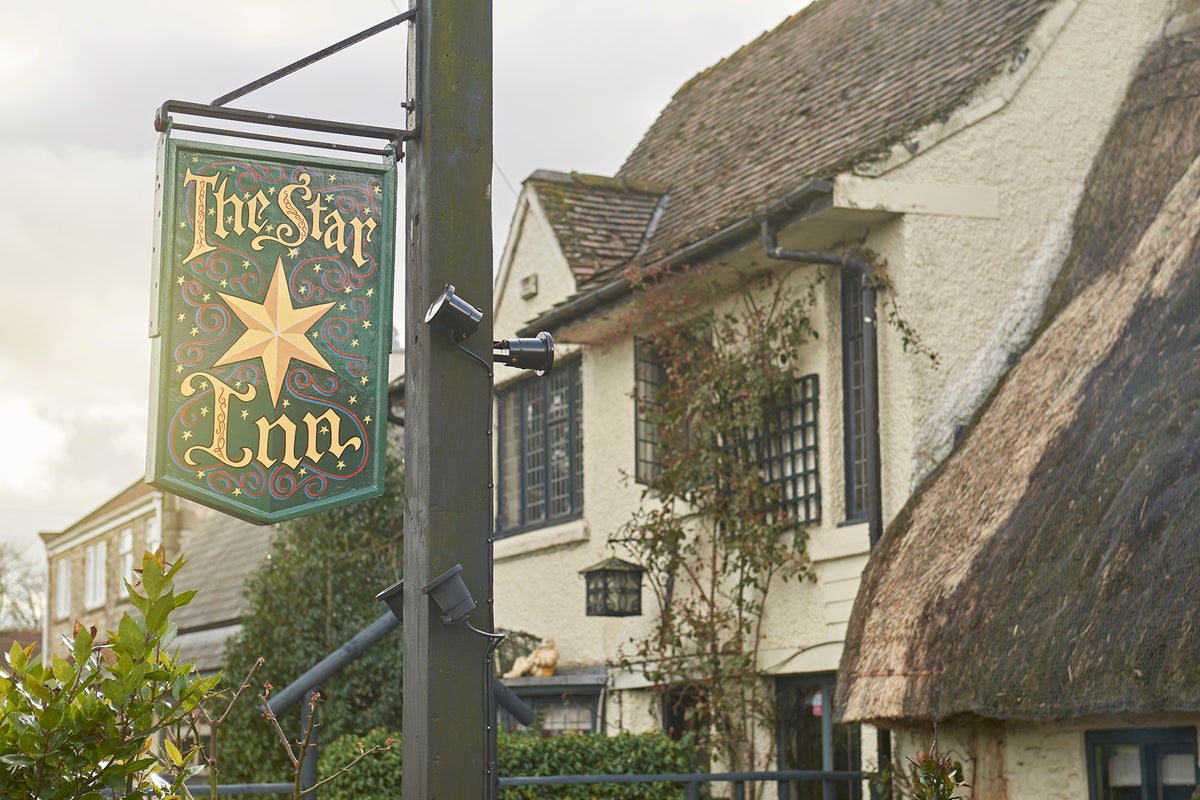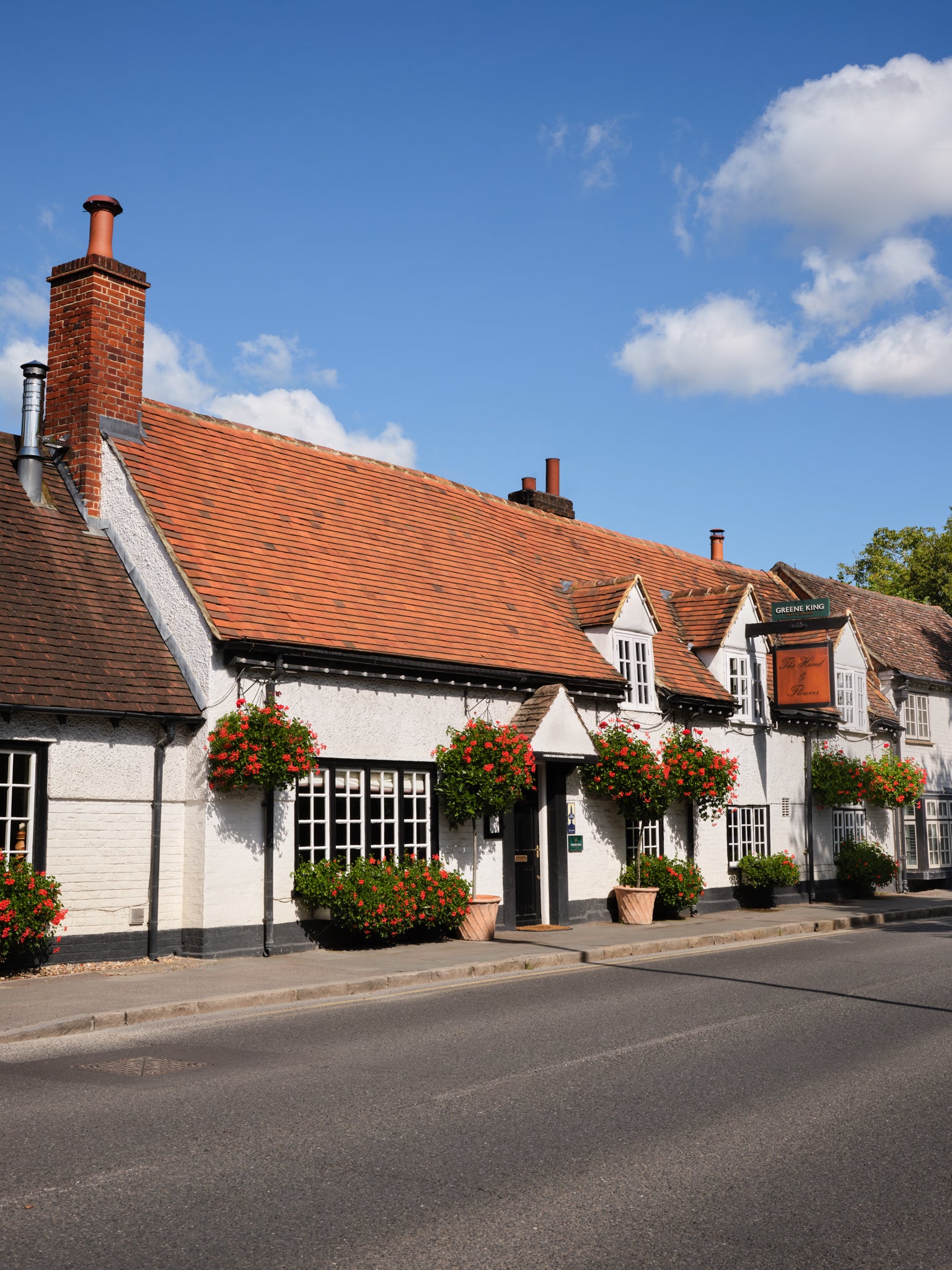
£30 roasts, Michelin stars… has the gastropub lost the plot?
Walk into The Unruly Pig in Suffolk and you’ll find electric pink walls, pig-themed art and a dish involving liver parfait that locals can recite like a prayer. At The Coach in Marlow, draught beer flows beside a treasure chest of kids’ toys and baked potato “tonnato”. The Star Inn at Harome serves Yorkshire puddings to fifth-generation farmers who park their Massey Fergusons next to Lamborghinis. And at The Hand and Flowers, you can get a duck pie that costs more than a round in your local Wetherspoon – and still feel like you’re in your mate’s front room.
This is the modern gastropub. Thirty years after the term was coined, it’s still the place we go to eat well without enduring the sanctimony of fine dining. But with prices climbing and the lines between pub and restaurant increasingly being blurred, one question lingers over the bar: have we reached peak gastropub?
The term “gastropub” first appeared in 1991, when The Eagle in Clerkenwell decided to serve restaurant-level food without ditching its ale taps and barstools. It was a neat concept at the time: a middle ground between the fusty boozer and the starched-tableclothed restaurant. By 2009, the Estrella Damm Top 50 Gastropubs list had launched, further legitimising the movement and providing an annual barometer for the best pub cooking in the country. By 2012, it had earned a place in the dictionary.
What even is a gastropub in an age when nearly every pub serves decent grub? The lines have blurred. These days, any pub with a blackboard menu and a pork belly special wears the badge. Where once a ploughman’s was enough, now there’s “market fish with fennel pollen”. Napkins are folded, wine is decanted, and the question of what makes a pub a pub has become something of a national identity crisis.
“It becomes a restaurant when you can’t pop in for a pint,” says Tom de Keyser of The Hand and Flowers (Tom Kerridge’s place in Marlow, two Michelin stars and No 32 on Estrella Damm’s list). Sarah Hayward, head chef at The Coach (No 29 and down the road from Kerridge), admits, “We can try to escape the fact that we are generally known as a restaurant even though we distinguish ourselves as a pub.” But she insists it’s still a proper pub: no tablecloths, Sky Sports on in the background, great local beers.
“There’s pretty blurry lines on that score these days,” says Dave Wall of The Unruly Pig, which was crowned this year’s top gastropub in the country. “But there is one thing that I always think distinguishes, and that should be laid-back, unstuffy and relaxed service. And of course, you should always be able to get a cold pint.”
To imagine that pubs only discovered food in the 1990s is to forget the joy of a good steak and ale pie or a fish finger sandwich after a long walk. Chefs remember those early meals fondly.
“The warmth, energy and hospitality of the room, alongside a very refined version of a banging pie and mash,” says De Keyser, recalling his first truly great pub meal.
Andrew Pern, of The Star Inn at Harome, which ranked No 3 in the country, harks back to the 1970s, eating with his family at The Wheatsheaf in Egton: “I remember savouring their venison casserole, trout with toasted almonds and steak with stilton sauce.” By the 1990s, he was eating lobster thermidor and chateaubriand at North Yorkshire pubs like The Angel at Hetton, a “forefather of great food in pubs”.
Gastropubs didn’t appear out of nowhere: they emerged because the public’s expectations evolved. A generation raised on Ready Steady Cook and Saturday Kitchen didn’t want soggy chips with their pint. They wanted duck pie and rhubarb soufflé. Chefs responded.

“I couldn’t wait to anglicise these French classic dishes and give them a northern twist,” says Pern, who sees The Star Inn as an “English auberge-style inn”. That instinct to elevate without alienating is why the best gastropubs continue to thrive.
It also helped when Michelin started paying attention. The Stagg Inn in Herefordshire became the first pub to be awarded a Michelin star in 2001. Kerridge’s Hand and Flowers followed, becoming the first to hold two. It nudged the gastropub from a plucky upstart into the realm of serious cuisine.
There are plenty of explanations. Rising costs. Tighter margins. Utility bills that would make a utility company blush. A shortfall of chefs. A national staff crisis. But perhaps the most quietly revolutionary moment came in 2007: the smoking ban.
“I think a real catalyst for the growth of the gastropub industry in the UK was when the smoking ban came into place,” says Wall. “The culture of the ‘boozer’ definitely changed after that, and the popularity of ‘going for a pint’ declined.”
Add to that the decline in alcohol consumption, especially among younger people, and you get a simple truth: the pub had to evolve or die. Food wasn’t a gimmick. It was a life raft.

No one walks into a gastropub today expecting to pay £2 for a pint (those were the days). But the backlash to pub pricing has been especially vocal in recent years, with pints closer to £7, Sunday roasts north of £30 and fish and chips approaching fine dining territory.
“Unfortunately, prices have gone up, yes,” says De Keyser. “However, this is down to the cost of living and produce going up… If anything, I don’t believe pubs charge enough in relation to the rising tax, staff, ingredient and utility costs that they have to consistently manoeuvre around.”
Wall puts it bluntly: “Smaller businesses and independents have taken battering after battering on their profitability over the past few years… Inflation of prices is an absolute reality because the government has provided the industry with absolutely no choice.”
But these pubs aren’t unaware. They’re offering value where they can. “We offer an ever-changing seasonal set lunch menu, classics menu and house menu,” says De Keyser. “These three menus at different price points keep the pub accessible to all.”
At The Coach, Hayward offers a £15 set lunch mid-week. At The Unruly Pig, there’s a “Tasting Thursday” menu for £49 and a “Social Sunday” one. At The Star Inn, there’s a loyalty card giving 20 per cent off to regulars and locals.

So yes, a pie may now cost more than a tenner. But you’ll get impeccable service, a menu cooked with care and a pub that still knows your name.
The best ones still feel lived-in. That’s the word chefs use again and again. And not just in the nostalgic, smoke-stained sense.
At The Star Inn, you might see someone in waxed tweed playing dominoes by the bar while the Six Nations blares on the TV. There are cricket team photos on the wall. The ploughman’s is still on the menu.
“We have had lords, ladies, filmstars and even royalty rubbing shoulders with fifth-generation farmers,” says Pern. “Nobody bats an eyelid. We consider this a very democratic pub.” Turns out the dress code for democracy is wellies or a tiara – whichever is closer to hand.
The Coach has Sky Sports, a kids’ treasure chest and a regular guest who’s 101. “We even know which seats our regulars favour in the restaurant,” says Hayward.
“We know our regulars’ names, and they know ours,” says Wall. “We will always treat them as our most valued guests.”
.jpeg)
The food may be refined, but the spirit remains the same: all are welcome, pint or no pint.
If anything, the gastropub has never been more necessary. A business model based on pints alone doesn’t cut it anymore. But the fear is that as more pubs go the way of celeriac remoulade and dashi-glazed carrots, the character will be stripped away.
De Keyser isn’t worried. “The gastropub will never peak,” he says. “Even though hospitality is massively feeling the squeeze at the moment, we will keep rising and attacking.”
And maybe that’s the answer. The gastropub isn’t an endpoint. It’s a continuation. A pub, after all, has always been a shape-shifter. What matters is not what’s on the plate, but how you feel while eating it.
They’ve been declared dead. They’ve been called the future of British food. They’ve been accused of gentrifying the local… and of saving it.
The truth is, the best gastropubs are doing something quite remarkable: being both a local and a destination. A restaurant and a refuge. A place where you can have a triple-cooked chip or a triple-layered conversation.
The point isn’t whether the gastropub has peaked. The point is that they’ve kept the pub alive – pint, pie and all.










